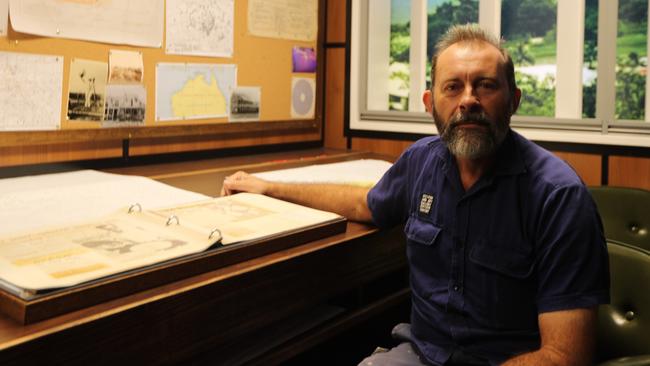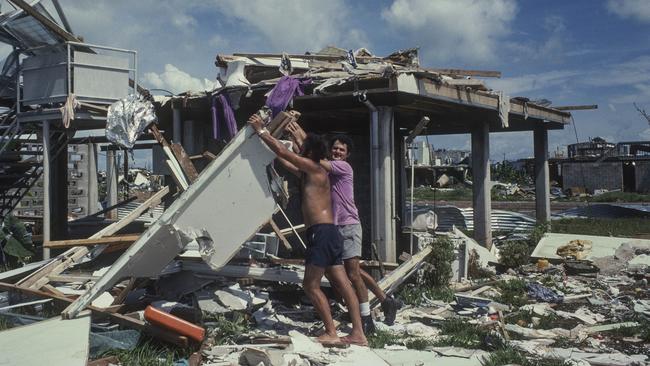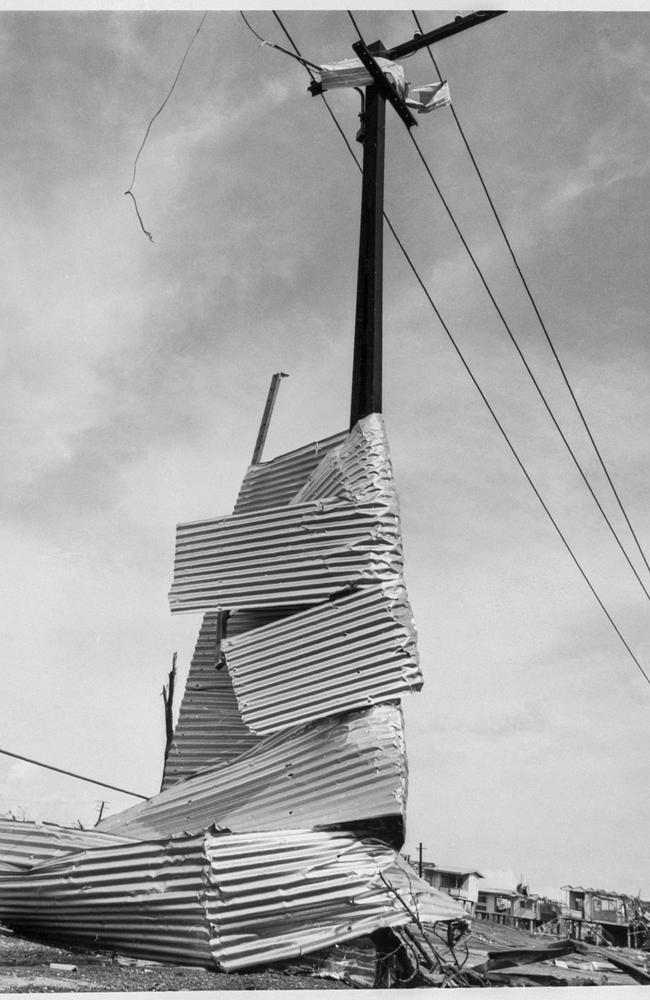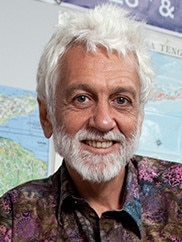A city renewed after Cyclone Tracy tragedy: Jared Archibald, Steven Farram reflect on rebuild
Thousands left Darwin after Cyclone Tracy, some for safety, some for good. But the strength of many built up a new, stronger Darwin, and left indelible changes on the way we built our city.

Northern Territory
Don't miss out on the headlines from Northern Territory. Followed categories will be added to My News.
Cyclone Tracy left in its wake a decimated Darwin that took years to recover and rebuild, and it of course left its scars, but it also shaped a new future for the Top End.
From cultural and societal shifts to more practical changes that have since become legal requirements in the Northern Territory, Darwin after Tracy would never be the same again.
While he wasn’t on the ground when the cyclone rolled in, Territory History curator at the Museum and Art Gallery of the Northern Territory, Jared Archibald, is a Territorian that began calling the Top End home after a ‘back to Darwin’ festival.
“They had back to Darwin air races, they had back to Darwin concerts, they had all these things trying to not just have people come back that we had before, but attract new people,” Mr Archibald said.
“This was the land of opportunity, Darwin was back on the map, there were places to live, it was a vibrant young go ahead, a place with huge opportunities, ‘come back or come’, they said.

“And that’s what my Dad did.”
At nine-years-old, Mr Archibald and his family moved to the Northern Territory in 1979 and he saw first hand the damage that was still left behind after Cyclone Tracy, but also how the Territory was emerging out of the rubble and into something new.
On July 1, 1978, the first NT self-government was established, which changed everything, Mr Archibald said.
“The way the commonwealth looked at us changed, the way [the Territory] was funded,” he said.
“But it also meant that Territorians had an actual say in what was happening, not just in Darwin but in the whole Northern Territory; and that changed everything.
“I got here in 1979 … and we were here for the first year anniversary.

“They gave out flags, they gave out pouches, you could tell it was this super proud place and we didn’t live there, we just walked into this but we were a part of this influx of new people coming.”
The transformation of Darwin in the wake of Cyclone Tracy was not only societal or political, but there were fundamental changes to how things were done.
A simple, albeit rather significant, change after Tracy was the shift from nailing down roofs to homes, to screwing them down, Charles Darwin University Associate Professor Steven Farram said.
“The biggest impact of all was the building code,” Mr Farram said.
“Pre Cyclone Tracy … there had been some criticism that the buildings that were being constructed at that time weren’t very robust.

“Not too much notice was taken about that.
“[Builders have] said all they ever did was just nail the roof down, that was it, just whack a nail in it.
“But when the wind comes in through a broken window, the pressure builds up in a house and it can just lift the roof off
“Post Cyclone Tracy, everything has to be screwed down, and that holds much better, it really made a difference.”
The rebuilding of Darwin mostly occurred in 1976 once the newly formed Darwin Reconstruction Commission had established new building codes – and most of the debris and damaged buildings were removed.
Mr Archibald said the navy, army and many others were a part of the big cleanup before the big rebuild.
“The rebuilding starts, the repair of repairable buildings, and the building of complete new suburbs to rehouse,” he said.
“Within three years, the reconstruction commission had repaired or rebuilt around 3000 homes, at a huge cost.”
Mr Farram said the reason the rebuilding of Darwin cost so much was just how cyclone-resistant some of the new houses were.
“There are still some buildings around which were built post Cyclone Tracy in the earliest time, which really looked more like a fortress or a bomb shelter or something,” he said.
“They made them so strong, with narrow windows, very solid looking things.
“Whereas today they can build a house that doesn’t look so vastly different to houses like pre Cyclone Tracy, but they are.
“You don’t necessarily see straight away, but they are very, very strong and can withstand those cyclonic winds.”
More Coverage
Originally published as A city renewed after Cyclone Tracy tragedy: Jared Archibald, Steven Farram reflect on rebuild




